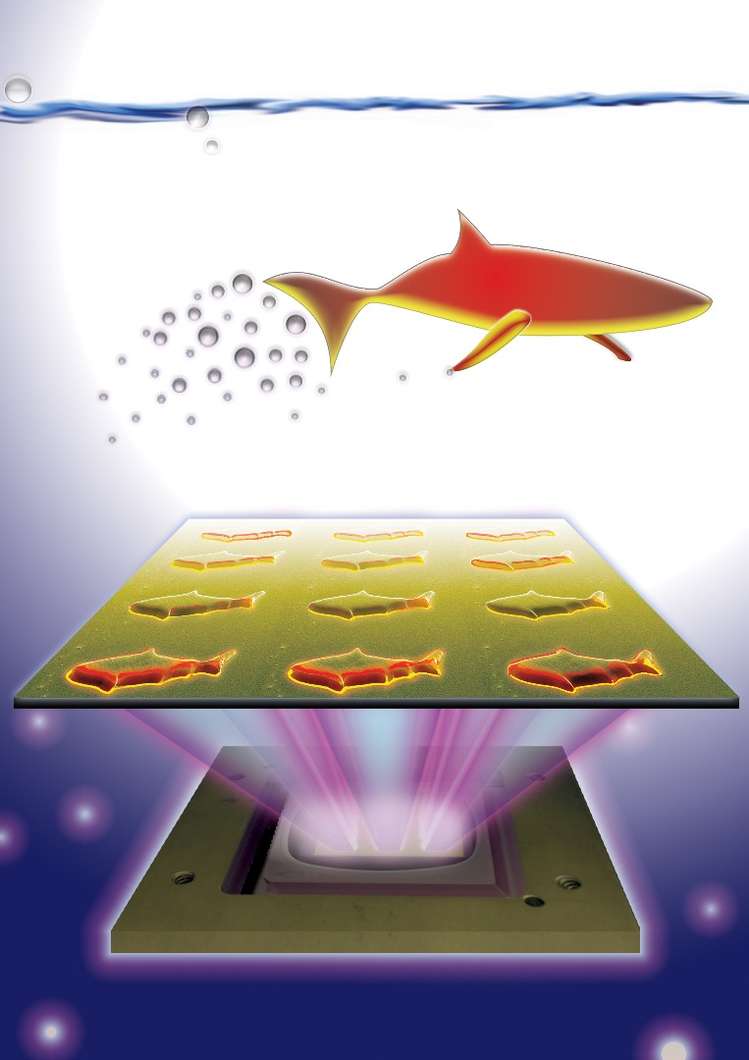Developed by nanoengineers at the University of California, San Diego, 3D-printed fish-shaped microbots may be the next cutting edge method for delivering drugs to precise locations within our bodies while simultaneously removing toxins. Self-propelled and magnetically steered, these “microfish” are chemically powered by hydrogen peroxide and efficiently swim around in liquids.

Although these are not the first micro-sized robots with various locomotion capabilities, the technology used to create them is more complex, thus making the microfish easier to produce and more comprehensive in performance. Produced using a high-resolution printing technique called microscale continuous optical printing, the process allows hundreds of 120-microns-long, 30-microns-thick microfish to be printed at once. It also allows for other designs to be created including sharks, manta rays, and bird shapes by slightly tweaking the custom-designed CAD program.
The microfish contain platinum nanoparticles found in their tails, which when exposed to hydrogen peroxide, undergo a chemical reaction that propels the fish forward. Iron oxide nanoparticles found in their heads allow the microfish to be steered with magnets.
“We have developed an entirely new method to engineer nature-inspired microscopic swimmers that have complex geometric structures and are smaller than the width of a human hair. With this method, we can easily integrate different functions inside these tiny robotic swimmers for a broad spectrum of applications,” said the co-first author Wei Zhu, a nanoengineering Ph.D. student in Chen’s research group at the Jacobs School of Engineering at UC San Diego.
Because the microfish can remove toxins from both our bodies and water, the researchers conducted a proof-of-concept experiment where they dispersed toxin-neutralizing nanoparticles, polydiacetylene (PDA) which capture harmful pore-forming toxins such as the ones found in bee venom, throughout the bodies of the fish, and placed them in a solution filled with toxins. When PDA nanoparticles combine with toxin molecules, it emits a fluorescent red light. The intensity of the fishes’ glow gauges the toxicity level in the environment and monitors detoxification ability.

“The neat thing about this experiment is that it shows how the microfish can doubly serve as detoxification systems and as toxin sensors,” said Zhu.
Other than removing toxins, the microfish can serve as machines to directly deliver drugs to humans and animals, thus furthering human medicine and as well as animal conservation. Jinxing Li, coauthor of the study, hopes to also design surgical microbots that make operations safer and more precise. The study, published in the journal Advanced Materials , can be found here.
Via Gizmag
Advertisement
Learn more about Electronic Products Magazine





